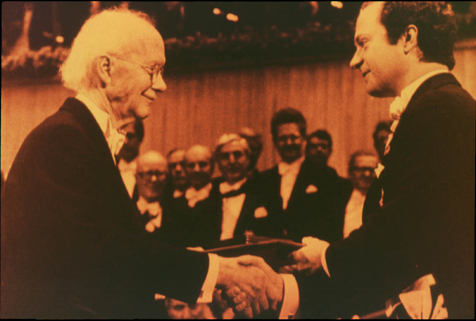
Faculty Research 1980 - 1989
Genetic control of lipid transport in mice. II. Genes controlling structure of high density lipoproteins.
Document Type
Article
Publication Date
1983
Keywords
Apolipoproteins: ge, Female, Genes-Structural, Lipids: me, Lipoproteins-HDL: ge, Mice, Mice-Inbred-Strains, Phenotype, Polymorphism-(Genetics), Species-Specificity, SUPPORT-NON-U-S-GOVT, SUPPORT-U-S-GOVT-P-H-S
First Page
5071
Last Page
5078
JAX Source
J-Biol-Chem. 1983 Apr 25; 258(8):5071-8.
Grant
CA30536, GM13914, GM18684
Abstract
Genetic factors controlling the structure of high density lipoproteins (HDL) in mice have been examined. Surveys of inbred strains of mice revealed genetic structural variations of the two major apolipoproteins of mouse HDL, apolipoproteins A-I and A-II. The structural variations alter the charge of the proteins as judged by isoelectric focusing of HDL under denaturing conditions. The structural variations are inherited as single Mendelian genes exhibiting co-dominant expression. The structural gene for mouse apolipoprotein A-II, designated Alp-2, resides on mouse chromosome 1, tightly linked to Ly-m20, a lymphocyte alloantigen locus. Previous studies, as well as our results, suggest that the structural gene for mouse apolipoprotein A-I, designated Alp-1, is on mouse chromosome 9. The genetic structural variation for apo-A-I results in a shift in the charge of the entire family of apo-A-I isoforms, indicating that they are all encoded by a common structural gene. The structure of intact HDL, examined primarily by electrophoretic techniques, exhibits numerous and complex phenotypes among different strains of mice. One variation, controlling the density and possibly the size of HDL, has been studied in two sets of recombinant inbred strains of mice. The results indicate that the variation is controlled by a single major gene that is either tightly linked to or identical with the Alp-2 gene on chromosome 1. In addition to structural variation, inbred strains of mice exhibited considerable quantitative variation of plasma HDL. Thus, the mouse provides a useful model system for examining the genetic control of mammalian HDL structure and regulation.
Recommended Citation
Lusis AJ,
Taylor BA,
Wangenstein RW,
LeBoeuf RC.
Genetic control of lipid transport in mice. II. Genes controlling structure of high density lipoproteins. J-Biol-Chem. 1983 Apr 25; 258(8):5071-8.

